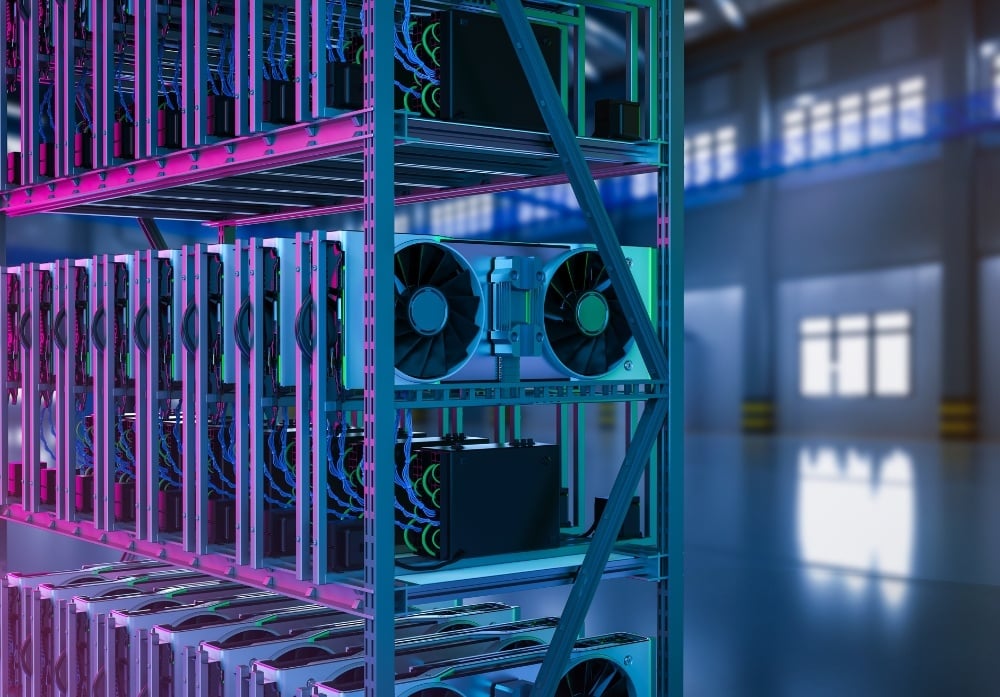Detect and Prevent Unauthorized Crypto Mining on Your Network

Blockchain-based cryptocurrency has revolutionized finance and technology, attracting a large and loyal following. However, the hardware-intensive demands of cryptocurrency mining can lead to unauthorized crypto mining within organizations, sometimes by individuals exploiting IT assets for personal gain.
This activity, known as "rogue crypto mining," can harm your organization through excessive energy costs, hardware wear and tear, bandwidth consumption, or even violations of funding agreements like E-Rate.
How can you detect and mitigate unauthorized crypto mining? Let’s identify key signs and explore how to implement proactive strategies to protect your IT infrastructure.
Signs of Unauthorized Crypto Mining on Your Network
To ensure your organization's assets are being used appropriately, keep an eye out for these telltale signs of rogue cryptocurrency mining:
- Unmanaged Systems: Devices that are not centrally managed or can only be accessed by a single administrator may signal suspicious activity.
- High CPU or Bandwidth Utilization: Systems showing unusually high CPU usage or generating heavy bandwidth traffic could be mining cryptocurrency in the background.
- Unusual Network Communication: Monitor for systems communicating with foreign IP addresses or regions that are not typically accessed from your network.
- Firewall Bypass: Devices that connect directly outside your firewall or use dedicated circuits may be avoiding standard security checks.
Proactive Measures to Detect and Prevent Unauthorized Crypto Mining
Taking a proactive stance is crucial in identifying rogue systems and mitigating crypto mining risks. Here are the steps to follow:
1. Use DNS Filtering Platforms
Implement a DNS filtering solution to detect, warn, or block traffic associated with crypto mining services.
- Ensure your firewall restricts DNS queries to your specific filtering service and blocks others.
- Watch out for DNS over HTTPS (DoH), which can bypass DNS filters. Prevent this by blocking DoH servers, forcing specific browsers with DoH disabled, or inspecting HTTPS traffic in your firewall.
2. Monitor Internet Utilization
Regularly analyze Internet utilization reports for unexpected traffic patterns, particularly after business hours when systems are typically inactive.
3. Conduct Physical Inspections
Inspect your facilities for unauthorized or unfamiliar devices. Rogue hardware might be hidden in unusual places, such as:- Janitorial closets
- Under desks
- Ceilings or raised floors
- Rooftops
Look for equipment from unknown manufacturers or devices located in non-standard areas.
4. Use Network Traffic Analytics (NTA) and SIEM Tools
Deploy NTA platforms or an SIEM solution with anomaly detection to identify abnormal traffic patterns and flag suspicious activity.
5. Scan Your Network Regularly
Perform regular network scans using tools like NMAP to detect unknown systems. Scan for open ports and unusual services that may indicate rogue operations.
Steps to Take if Unauthorized Mining Is Detected
If you uncover unauthorized crypto mining on your network, proceed cautiously to preserve evidence. This is essential if your organization intends to seek recovery of funds or take legal action.
Actions to Consider:
- Contact your local FBI field office for guidance.
- Consult your cybersecurity insurance provider to ensure your response aligns with policy guidelines.
- Avoid alerting bad actors prematurely, as this could disrupt evidence collection.
Why Prevention Matters for Education Institutions
For education institutions, particularly K-12 districts operating under strict funding agreements like E-Rate, unauthorized cryptocurrency mining poses significant risks. E-Rate funding, which provides critical support for technology infrastructure in schools, comes with strict guidelines regarding how IT resources can and cannot be used. If rogue crypto mining is discovered on a school’s network, it could lead to compliance violations that jeopardize this essential funding.
Beyond compliance, crypto mining consumes an enormous amount of computing power and electricity. For schools already operating under tight budgets, this unnecessary strain can lead to higher utility costs, slower network performance, and premature hardware failure—taking valuable resources away from educational tools and student programs.
Additionally, unauthorized crypto mining often exploits security vulnerabilities, creating openings for further cyber threats like ransomware or malware attacks. Schools, which are already prime targets for cybercriminals due to their sensitive student data, cannot afford to leave their systems exposed.
In short, unauthorized crypto mining does not just waste energy and resources; it diverts IT assets away from their intended purpose—supporting student learning, teacher productivity, and campus safety. By remaining vigilant, school administrators and IT teams can ensure their technology investments continue to enhance education rather than hinder it.
Stay Protected with Expert IT Support
Rogue crypto-mining poses a growing challenge for organizations, especially in the education sector. By proactively monitoring your systems and adopting the strategies outlined above, you can minimize risks and protect your network assets.
If you're looking for a trusted technology partner to safeguard your IT infrastructure, NIC Partners can help. We specialize in delivering effective network security solutions tailored to the needs of education, healthcare, and government organizations.
Contact us today to secure your network and keep your focus where it matters—supporting your community.

